The 2025 Tire Rack One Lap of America presents a unique challenge for any vehicle: eight tracks over eight days, 3,500+ miles of transit driving and 16 competitive events – all on a single set of tires. Now imagine tackling this legendary endurance event in an electric vehicle. That’s precisely what we’re doing with the Dodge Charger Daytona Scat Pack, and after completing days 2 and 3, we’re proving that this electric muscle car is far more than just a boulevard cruiser.
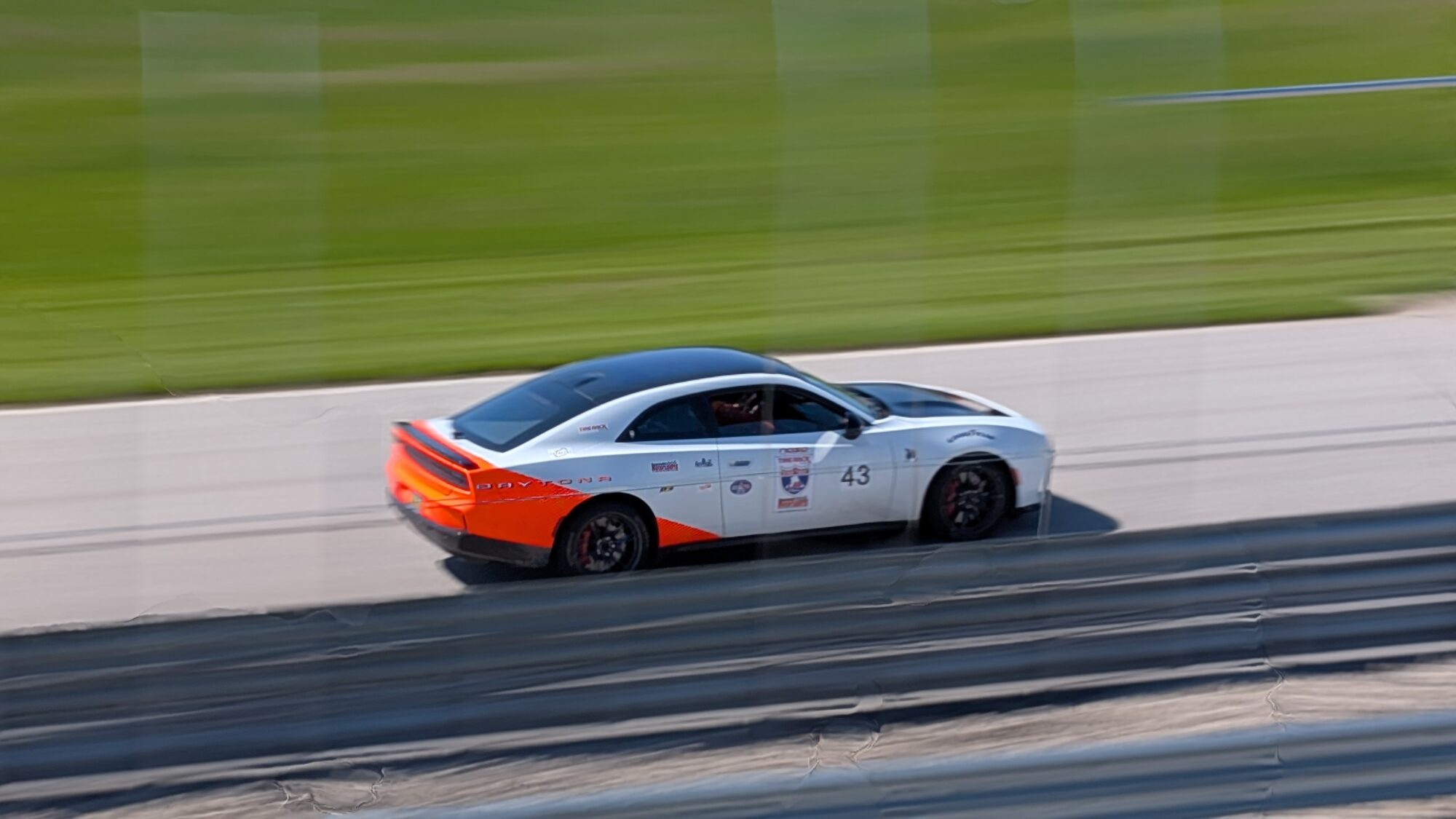
Our second day took us to Gateway (Worldwide Technology Raceway) in Missouri, across from the iconic St. Louis Arch. The 1.6-mile road course configuration gave us our first real opportunity to push the Charger Daytona on a proper circuit.
When I asked David Carr, the on-track driver for this year’s event and vehicle dynamics performance engineer, he said, “I had a good day there. We finished 33rd overall after two sessions.” That’s 33rd out of 82 cars – a solid result in a vehicle we’re still learning to extract maximum performance from lap after lap.
What makes this achievement particularly noteworthy is how David continues to adapt how he is driving the Charger on track to maximize the vehicle’s potential over the course of each session. Mastering the car’s unique performance characteristics, developing strategies to condition the battery before track sessions and managing power delivery during competition.
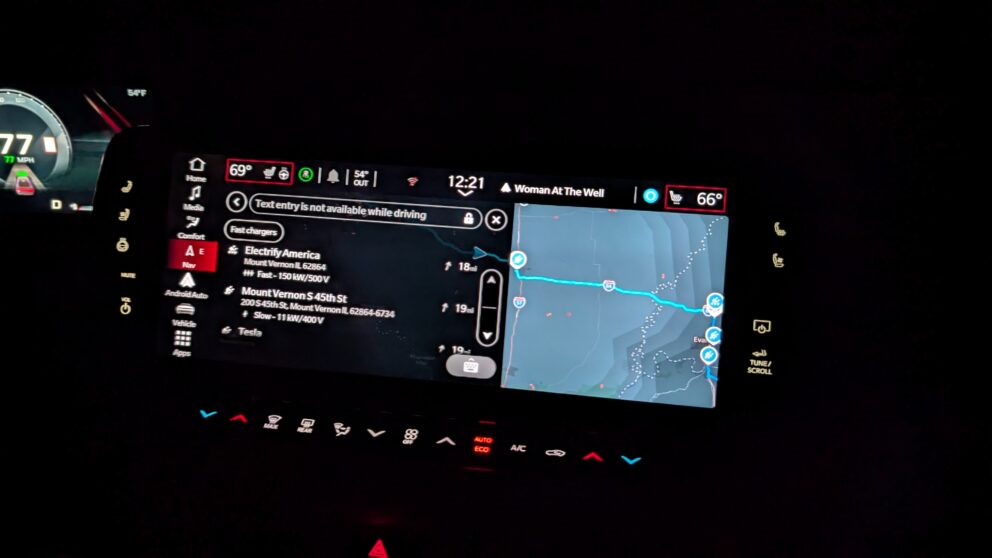
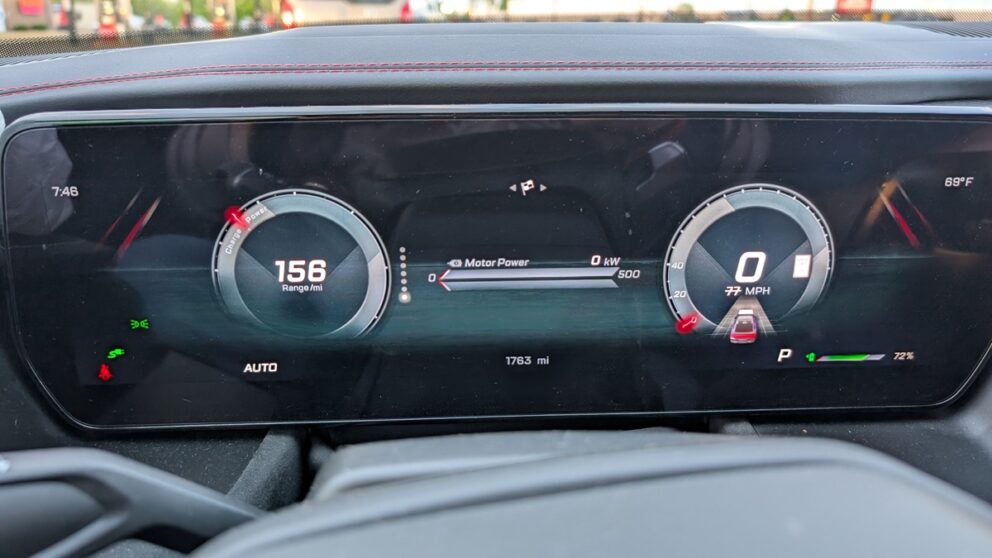
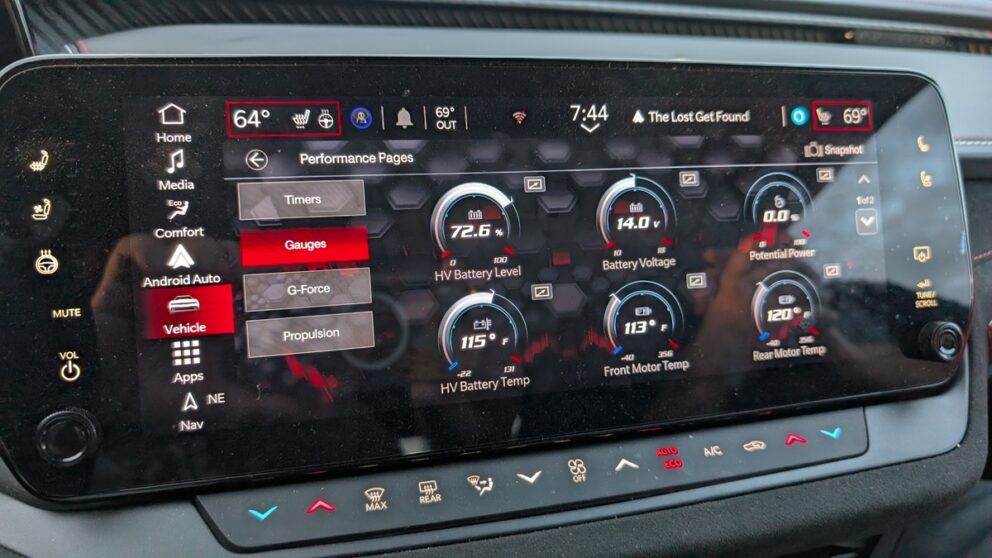
“Going through the on-screen menus, you can choose vehicle, dashboard and race options, and then go into the race prep menu and choose either Track or Drag Race. The battery is conditioned differently for each of these use cases,” David explained.
This conditioning process serves two critical functions: increasing the voltage to ensure maximum power availability while simultaneously cooling the battery to manage heat buildup during high-performance driving. This allows you to run at higher power longer when on track.
“One of the things you’re always fighting on track is how much power you have versus how much heat you can manage,” David elaborated. “Heat eventually can lead to power loss, and we want as much power for as long as possible.” Lessons learned on day 2 at Gateway would be exceedingly valuable as we rolled across Missouri.
Day 3 brought us to Hedge Hollow Road Course in western Missouri, near the Kansas border. At 3.2 miles – double the length of Gateway – this “hidden gem of a race track” required a significant shift in driving approach.
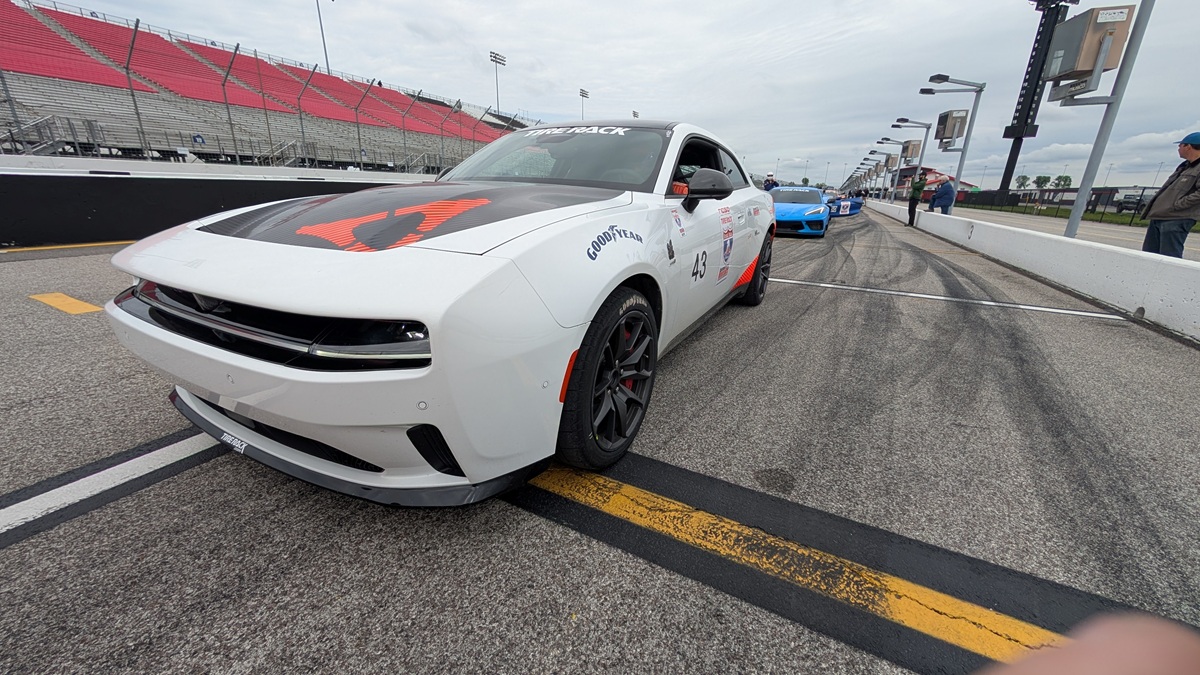
The longer configuration meant we couldn’t simply “let it eat” as we did at Gateway. Battery heat management became even more critical, forcing us to adapt our driving style. On the shorter Gateway circuit, David could be more aggressive with throttle application, knowing the total heat buildup would be limited by the shorter session length. At Hedge Hollow, a more nuanced approach was necessary.
“On a bigger track where you have more heat gain because you’re going a longer distance with the throttle on the floor, to keep temps down, it helps to change your driving style slightly,” David explained. “I was rolling a lot of speed into the corner and using the curbs to help rotate the car. It also meant I was lifting off the throttle a little sooner and picking it up smoothly at the corner exit.”
These techniques aren’t just about managing lap times – they’re about balancing performance with endurance. By minimizing time on full power, David could limit battery temperature increases per lap, ensuring consistent performance throughout the session.
The strategy worked brilliantly. Between the morning and afternoon sessions at Hedge Hollow, David improved by approximately seven seconds by refining his approach, focusing more on steering the car with the rear end rather than the front tires.
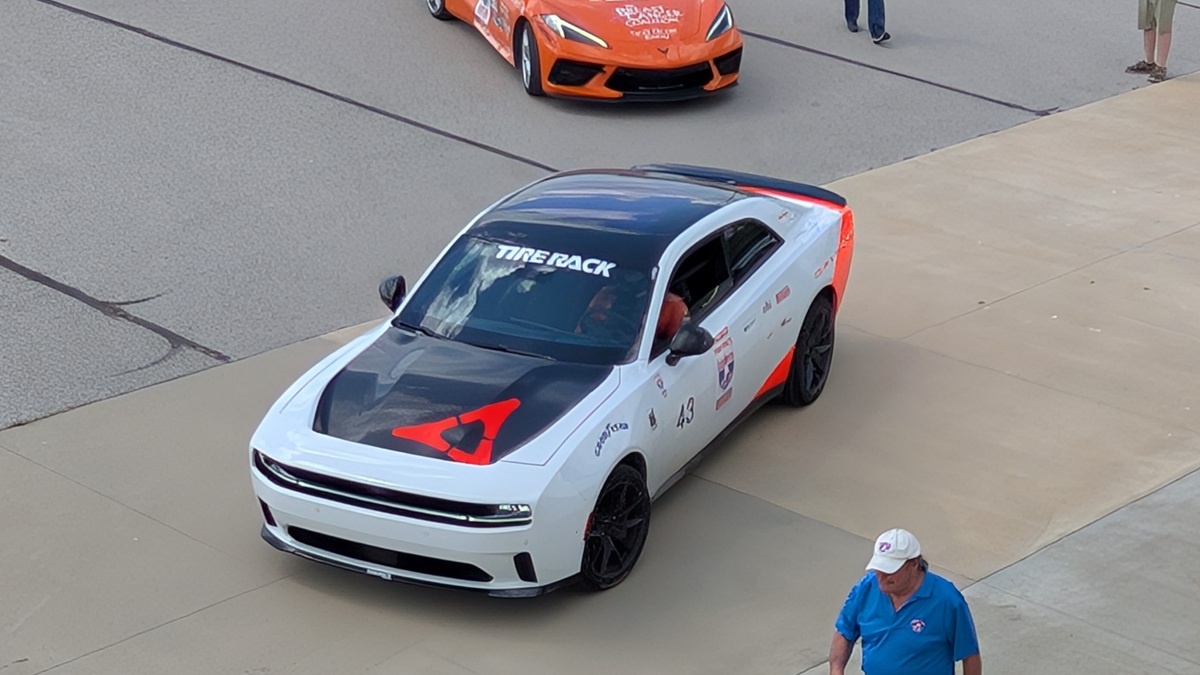
From my vantage point at race control, I could observe David’s technique through the circuit’s comprehensive camera system. I could see he was coming off the throttle more abruptly when approaching turn-in points. He was chopping the throttle to move weight to the front end. The abrupt throttle cut and aggressive turn-in rotated the car, allowing David to slow down with the front tires and roll through the middle of the corners with a bit more speed than the morning session.
Combining a deliberate throttle lift with decisive steering input, this approach takes advantage of the Charger Daytona Scat Pack’s impressive chassis balance. The chassis’ composure drew attention and praise from spectators and competitors alike.
Almost every person on the observation deck overlooking the entry to turn 1 commented on how good the car looked; none of them expected the Charger to be that composed through the high-speed corners of Hedge Hollow. This is high praise from a group of seasoned racers!
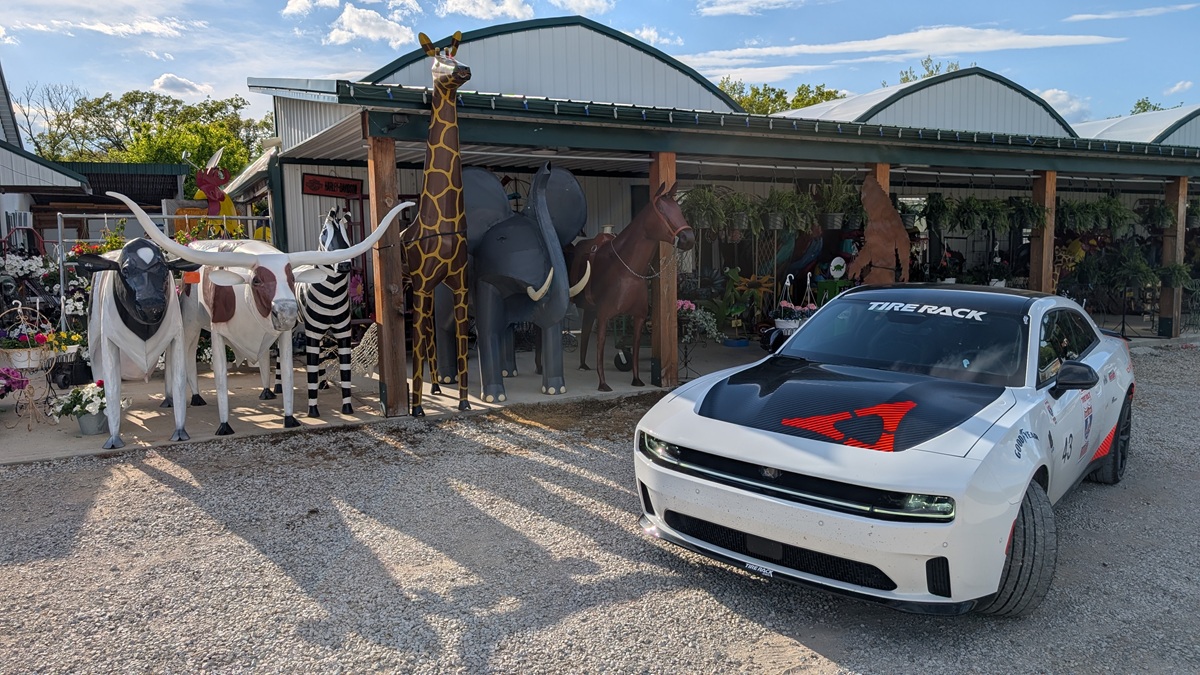
The competition doesn’t end when we leave the track. Our transit between venues presents its own challenges – managing charging stops and range while covering hundreds of miles between events is made easier with the Charger’s built-in ability to check for charging stations and add stops to your selected route on the fly. A feature we are utilizing with great success.
After wrapping things up at Hedge Hollow, we found ourselves at a charging station in the middle of Missouri, with 426 miles still to cover, before reaching our next destination in Bowling Green, Kentucky. This is the true challenge of One Lap of America for us this year: carefully managing the battery’s state of charge between 20% and 80% for optimal performance and charging efficiency.
Yet even these logistical challenges have produced unexpected moments of discovery. A search for more efficient charging options led us down back roads to “Dutch Valley” in Warrensburg, Missouri. Complete with metal sculptures, from 10-foot-tall roosters to dinosaurs, zebras, giraffes and amazing homemade candy (try the buck-eyes and Monster energy bites! SOOOO good!). These unplanned adventures have become part of our One Lap experience, and we can’t wait to see what we find next.

Three days into the event, our Goodyear tires are holding up admirably to the abuse, though we’ve noticed the expected wear pattern from running predominantly counterclockwise circuits. “The tires on the right side of the car look a bit more worn than the ones on the left side,” I observed, noting we’ll need to rotate them at some point to maximize tire life through the remaining events.
With drag racing on the horizon in the coming days, our electric muscle car will soon be able to demonstrate its strength in straight-line acceleration. But the real story so far has been the Charger Daytona’s competence on road courses and comfort during the long hauls in between tracks – proving that Dodge’s electric performance future extends far beyond the quarter-mile.

As we continue our 3,500-mile journey across America, we’re not just participating in this legendary endurance event – we’re demonstrating how electric performance vehicles can redefine what’s possible in one of motorsport’s most grueling tests of speed and stamina. Wish us luck! We have two days of 12- to 13-hour drives ahead of us.🏁

0 Comments